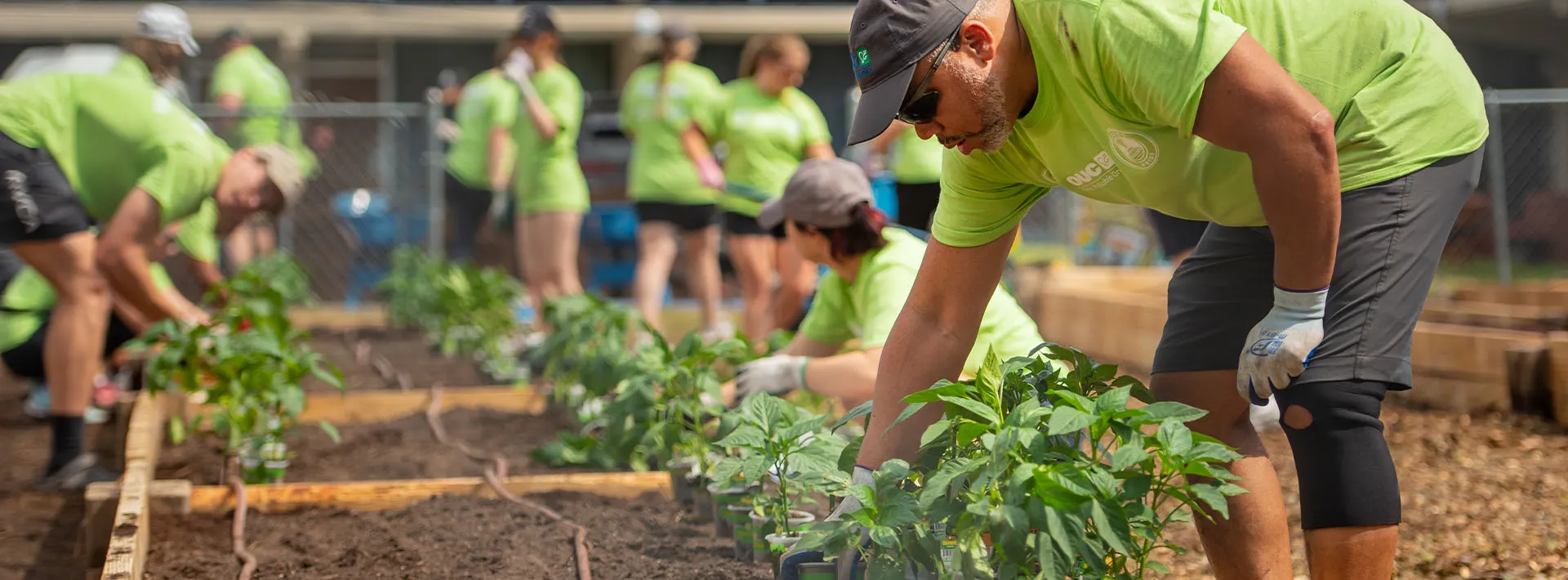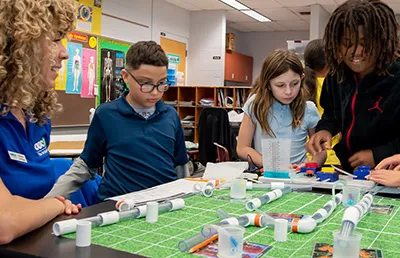
Protecting Wildlife
OUC’s environmental team is committed to protecting wildlife and their habitats around our infrastructure. With more than 66,000 distribution poles in OUC’s service area, ensuring the safety of bird populations that fly around our lines remains a priority. Many build nests on power poles and structures, which increases risks for both the birds and our electric system.
As one of the first utilities in Florida to create an Avian Protection Plan, our environmental, engineering and electric distribution teams use computer modeling to track nesting locations and foraging behaviors of bald eagles. We also install protective coverings on conductors, transformers and poles to help protect these beautiful creatures and improve safety and reliability for our customers.
Protecting & Preserving Habitats
Red-cockaded Woodpeckers
Designed to maintain essential habitat necessary for the survival of the red-cockaded woodpecker, prescribed burns are conducted regularly in wildlife refuge around Stanton Energy Center.
The burns are required by the United States Department of the Interior Fish and Wildlife Service and the Florida Fish and Wildlife Conservation Commission. In addition, the burns will help reduce the danger of wildfires.

About Prescribed Burns
Why does OUC participate in prescribed burns?
We take pride in the preserve that we have established and maintain around our Stanton Energy Center. To ensure the health of the preserve, federal and state regulations require the OUC to manage the land through annual prescribed burns. These burns are highly regulated and follow state and federal burn guidelines.
Which animals live in the preserve?
OUC is proud of its population of red-cockaded woodpeckers, which are identified as a federally threatened species by the U.S. Fish and Wildlife Service. The preserve is also home to more than 40 species of animals including deer, eagles, red foxes and the gopher tortoise, which is a threatened species in Florida.
How do you decide where to burn?
Before conducting a prescribed burn OUC engages the services of highly trained specialists that include arborists and biologists who take an inventory of the types of trees on the property and the different animal species that call the preserve home. Based on these assessments, and with federal and state approval, OUC decides where and when to conduct the burns. The survey maps out bird colonies, and gopher tortoise habitats. Prescribed burns are then conducted in a way that accommodates all the species living in the preserve.
Who conducts the burns?
We use certified burn managers and follow all federal and state regulations including providing the public with notices. It is important to let the public and our neighboring communities know when we will be conducting burns during Florida’s dry season. Burns only take place during appropriate weather conditions. Please note that all appropriate fire safety officials in the area are notified about the prescribed burns and support our efforts.
How big are the flames?
It is important to note that our goal is to keep the flames as low as possible in an effort to protect the natural systems. Flames are usually no higher than six inches off the ground. The certified burn experts are so specific they can even tell us how much they are going to burn and the direction the fire will take. We also use firebreaks to ensure that fires stay under control and don’t cross into other areas. Please note that you may see smoke in the area during times of an active burn.
What is a firebreak?
A firebreak is a gap in vegetation or other combustible material that acts as a barrier to slow or stop the progress of a prescribed fire.
What happens to animals during a burn?
Because we only burn small areas at a time, animals instinctively know to leave the area. All of our efforts are done with the safety and well-being of all the animals in mind.
When will the burns take place?
Burns take place during daylight hours, typically between 8 a.m. and 7 p.m.
Why are you doing this now?
As we enter Florida’s dry season we have a set window of time to conduct prescribed burns based on appropriate weather conditions.
Which regulatory agencies regulate this process?
The U.S. Fish and Wildlife Service, an agency within the U.S. Department of the Interior, the Florida Division of Forestry and the Florida Fish and Wildlife Conservation Commission.
If I have a question, who can I contact?
You may leave a voice mail at (407) 434-2944 and a representative will respond to you shortly.

Tree Line USA©
OUC has earned the Arbor Day Foundation Tree Line USA© designation for its ongoing commitment to effective vegetation management. It is the longest-running recipient of the award in Florida.
Tree Line USA© is a national program that encourages utilities to adopt practices that protect and enhance urban forests. It promotes the dual goals of delivering reliable electricity while preserving community trees.
To achieve this recognition, OUC meets five rigorous standards for urban forest management, including quality tree care, employee training, tree planting sponsorships, public education, and participation in Arbor Day events.
Promoting Water Conservation
OUC is committed to ensuring a reliable water supply for Central Florida while promoting water conservation. As the community grows, OUC focuses on efficient water use through advanced technologies and conservation efforts.
OUC’s conservation team conducts water audits to identify potential water loss and offer recommendations for improving efficiency. Eligible upgrades, such as EPA WaterSense smart irrigation controllers, high-efficiency toilets and water cisterns, may qualify for OUC rebates, helping customers conserve water and save on utility costs.





